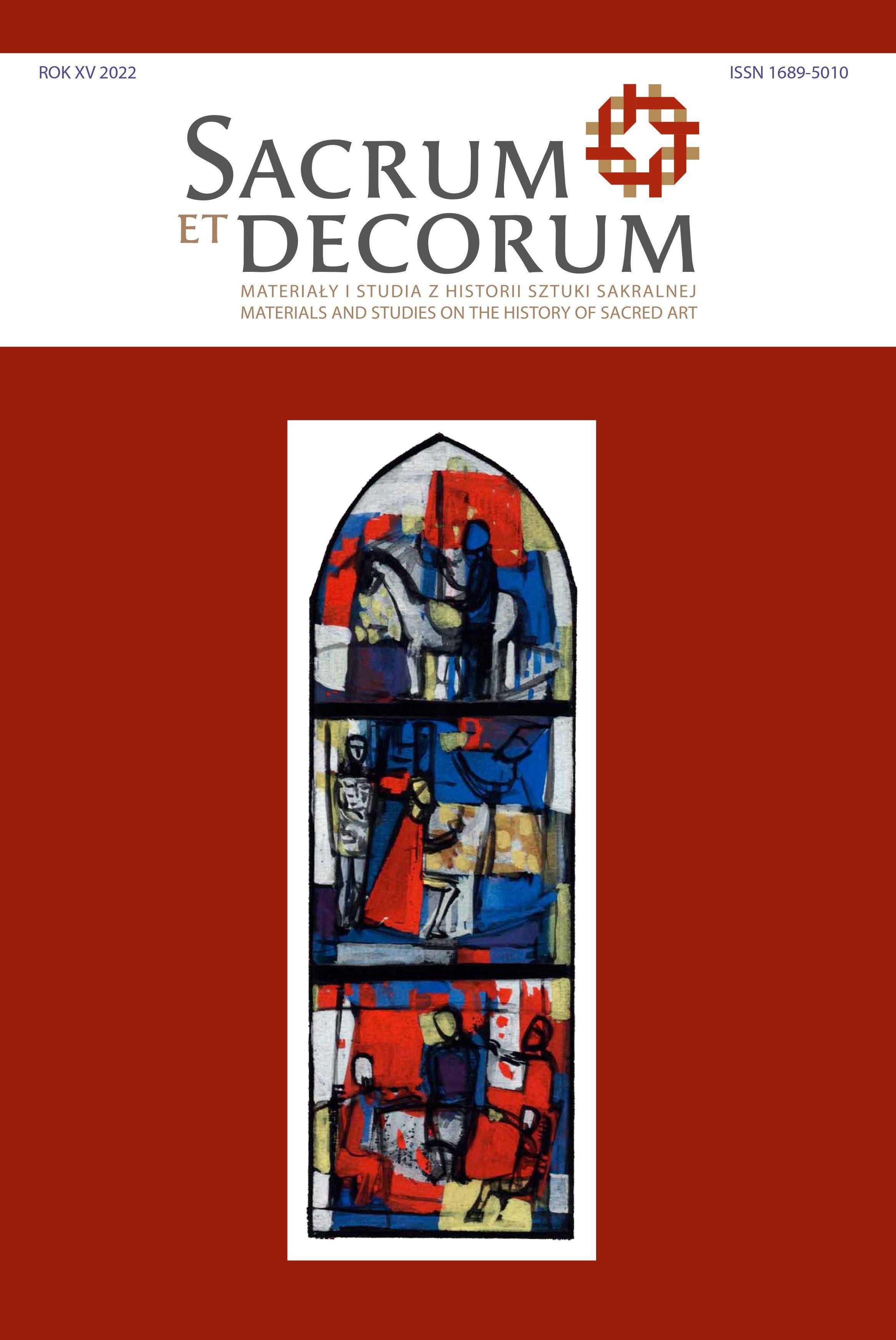Malarstwo ścienne Modesta Sosenki. Charakterystyka stylu na podstawie reprezentatywnych przykładów
The mural paintings of Modest Sosenko. Characteristics of the
style based on representative examples
Author(s): Olesia Semchyshyn-HuznerContributor(s): Monika Mazurek (Translator), Agnieszka Iwaszek (Editor)
Subject(s): Fine Arts / Performing Arts, Cultural history, Architecture
Published by: Wydawnictwo Uniwersytetu Rzeszowskiego
Keywords: Mоdest Sosenko; Ukraine; church; murals; early 20th century;
Summary/Abstract: In the considerable creative legacy of the Ukrainian artist Modest Sosenko (1875-1920), the murals and sacred easel paintings he created for more than ten Galician churches deserve special attention. His contemporaries noted that the artist's sacred works were characterised by his own ‘Sosenko style’, which boldly and organically combined Byzantine traditions reinterpreted by 16th- and 17th- century masters with modern European stylistic requirements of the turn of the 19th and 20th century. He was a pioneer who paved the way for the development of modern church art, which was helped by the circumstances of his life. After acquiring a thorough European professional education during his studies in Kraków as well as in Munich and Paris thanks to a scholarship funded by Metropolitan Andrey Sheptytsky, Sosenko returned to Galicia and, continuing his mentor’s activities in the field of museums, became a full-time employee of the Church (later National) Museum. His direct contact with old monuments of iconography, manuscripts and incunabula, and folk art allowed him to gain a deep understanding of the peculiarities of Ukrainian national art. Thus, the combination of his personal talent, professional knowledge and museum experience, as well as his close relationship with the head of the Greek Catholic Church – Andrey Sheptytsky, who directed all his efforts towards the revival of the high culture of decorating the sacred space of Eastern Rite churches, gave birth to an intellectual artist, ready to take up the challenge of the present day. However, it is not possible to appreciate Sosenko's achievements in their entirety. The warfare in the region during the two world wars of the 20th century, the years of Soviet rule, which was intolerant of cultural, national and spiritual heritage, and even the first years of Ukrainian independence, were not conducive to the preservation of the churches and their decoration. As a result, researchers are forced to conclude that most of Sosenko’s works have been irretrievably lost. The artist’s sources of inspiration, the specific composition of his monumental artworks, the range of colours, the ideological and aesthetic programme can only be reconstructed on the basis of the decorations of two churches in the Lviv region: St. Michael the Archangel in the village of Pidberizci and the Holy Resurrection in the village of Poliany, by making comparisons with fragments of lost murals recorded in archival photographs, and by adding the decoration, already after restoration toning, of the artist’s last sacred object – St. Nicholas Church in Zolochiv. Even such scattered data make it possible to observe many of the author's characteristics, to determine the process of the formation of Sosenko’s distinct individual artistic style, to which this study is dedicated.
Journal: Sacrum et Decorum. Materiały i studia z historii sztuki sakralnej
- Issue Year: 2022
- Issue No: 15
- Page Range: 93-109
- Page Count: 93
- Language: English, Polish

